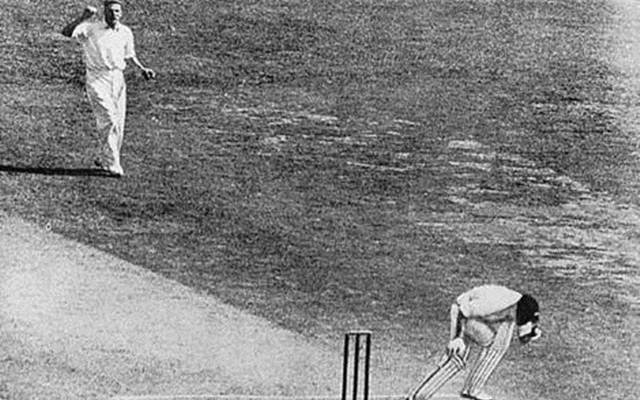The Bodyline effect on the Trans-Tasman Series
Wagner's peculiarity was glaring. Rarely, did any bowler in this decade claim six wickets in one inning, all through short deliveries.
2 Min Read


Douglas Jardine, Harold Larwood, and Bill Voce – that ring a bell? If not, allow me to remind you. These were three English cricketers who stood at the centre of the 1932-33 Ashes series in Australia, one of the few sporting events that caused a severe international stir. At its lowest ebb, the storm not only signalled the cancellation of the series but also threatened the political relations between Australia and England. To the English team’s delight, the leg was complete. But the scars remained long enough to mark a separate chapter in the cricketing rivalry between the two nations.
The series gave birth to a new word – Bodyline. It was a tactic deployed primarily to neutralise the run-scoring ability of Donald Bradman, but it got the better of most of the Australian batsmen. It was simple. Not that the ploy was new to take advantage of no limit on the number of fielders in the leg side. English captain Douglas Jardine kept a packed leg-side field which meant that the batsmen had to play very carefully in that area to ensure that the ball doesn’t go to the fielders on the full. The presence of Harold Larwood and Bill Voce meant that the skipper could execute his plan correctly since both possessed the speed and accuracy.
The visitors won the first Test by ten wickets without implementing the “Bodyline” tactic. The Baggy Greens bounced back to claim the victory in the second Test in Melbourne by 111 runs with Don Bradman also back in the fold. It was in the third Test in Adelaide, where at one stage, cops assembled outside the ground to maintain decorum. The incident that almost triggered a riot was when Larwood struck Bill Woodfull over the heart and Bert Oldfield on the head, thereby fracturing his skull.
The Englishmen did show their sympathy to Woodfull when he dropped his bat, bent, and held his shoulders in pain. At this stage, the crowd began to respond in a hostile manner. Nonetheless, Jardine brazenly lauded Larwood by calling “Well bowled, Harold! And just like that, a cricketing manoeuvre employed in an overly aggressive way lead to nearly suspending any relations between England and Australia. Finally, the visitors won the match by a whopping margin of 338 runs.
Statistically, it worked for England as they won that series by 4-1. Jardine’s men also managed to keep Bradman’s average to 56.57 contrary to his average of 139.70 against them in 1930. Moving forward, the MCC added to the laws of allowing only two fielders behind square on the leg, effectively dissolving Bodyline.
New Zealand bring back shades of it:
But who’s to say there wouldn’t be another Harold Larwood or Bill Voce invading the Australian shores? And it was coming from their neighbours, and things started rolling since their last encounter in New Zealand in 2016. It all unfolded in Christchurch in the second Test when Neil Wagner was the one who found success against Australia. He unleashed a barrage of short balls and claimed seven out of seven wickets in that match through them. The left-arm pacer began by sending back Joe Burns and Steve Smith in the first innings, who holed out to square leg, trying to play a hook shot.
Adam Voges became the victim by hooking one of the short deliveries to Tom Latham at square leg. The South African born speedster proceeded to by banging the ball short to Mitchell Marsh from round the wicket with a heaped leg-side field. All Marsh could do was finding the man at mid-wicket. Wagner moved on to dismiss Peter Neville with yet another short ball before getting the better of Josh Hazlewood by aiming one at his ribs that he nicked it to the keeper, BJ Watling. He snapped his seventh in the game by bouncing out David Warner in the fourth innings through a short of a length delivery.
Wagner’s peculiarity was glaring. Rarely, did any bowler in this decade claim six wickets in one inning, all through short deliveries. Earlier this year, the veteran achieved all seven wickets against Bangladesh in Wellington, courtesy of his short-pitched deliveries. Following that, Wagner again took eight out of his nine wickets through the short ball in Hamilton. His short-balls earned him success elsewhere; however, the question was whether he could make it productive on the Australian decks?
He indeed arrived on the back of a great reputation, having taken a massive leap to number three in the Test bowling rankings. According to the cricket analytics company CricViz, Wagner sent down 193 short balls in the first match in Perth, the most by any bowler in a Test fixture in Australia.
His approach in that sweltering heat kept the spirit up for the visitors. Eventually, with the lights on, the 33-year old appeared more threatening with the pink ball. He got Steve Smith twice with two short-ball dismissals and Marnus Labuschagne once and constantly unsettled Matthew Wade with the ball and his chatter. His approach was so successful that he collected four out of seven wickets in the game through the short-ball deliveries.
In due course, even his colleague, Tim Southee, ditched his conventional full-length bowling and resorted to unloading on the batsmen with short-pitch stuff. But was it the variable bounce and the quickness in Perth that assisted Wagner mainly? Australia did win the first Test by 296 runs, but their batsmen seemed to lack a clear blueprint on how to combat the short balls. Due to the packed leg-side fields, the Australians were fickle-minded on which way to turn the ball.
At times, they adopted the attacking persona. Other times, they merely bunted it to bide themselves time. In between, they negotiated it for singles by playing the hook and pull off soft hands. Ultimately, the batsmen got sucked in, lost patience and threw away their wickets. This was Kiwi bowlers’ plans and it paid off reasonably well.
Australia hit back with their own version:

But the Australian quicks weren’t going to hold it back either when the chance to roll their arms came along. Mitchell Starc hurled a brute of a bouncer on Colin De Grandhomme in the first innings that took a bit of a glove through to Steve Smith. Starc moved on to target Jeet Raval in the second innings by chirping “Last Test of your career.” A couple of balls later, Starc fired a short-of-a-length delivery that Raval just scooped it to give a simple catch to Nathan Lyon at point.
The left-arm seamer is now a reincarnated Test bowler whose adjustments with regards to his action has enhanced the wicket-taking ability. Towards the end, Neil Wagner managed a smile when he dealt with a bouncer from Starc to get it off for a maximum over third man. He shot another savage bouncer the next ball that Wagner edged to the keeper, Tim Paine. That was the ninth wicket of the match for Starc and the last of the game to fall off a short delivery. The inside analysis may suggest otherwise.
Still, numbers tell Australia dominated the match by bowling out the Black Caps for 166 and 171. Aussie skipper Tim Paine was full of respect for Wagner for putting his body on the line and sending down 50 overs with the same amount of velocity. However, he didn’t fail to declare that Bodyline would still rule this Trans-Tasman series. It seems unlikely that this series will be an encore of what took place 80 years ago. But, it all comes down to how best the batsmen can find ways to tackle gunshots of the short-ball against two menacing pace attacks.
Download Our App